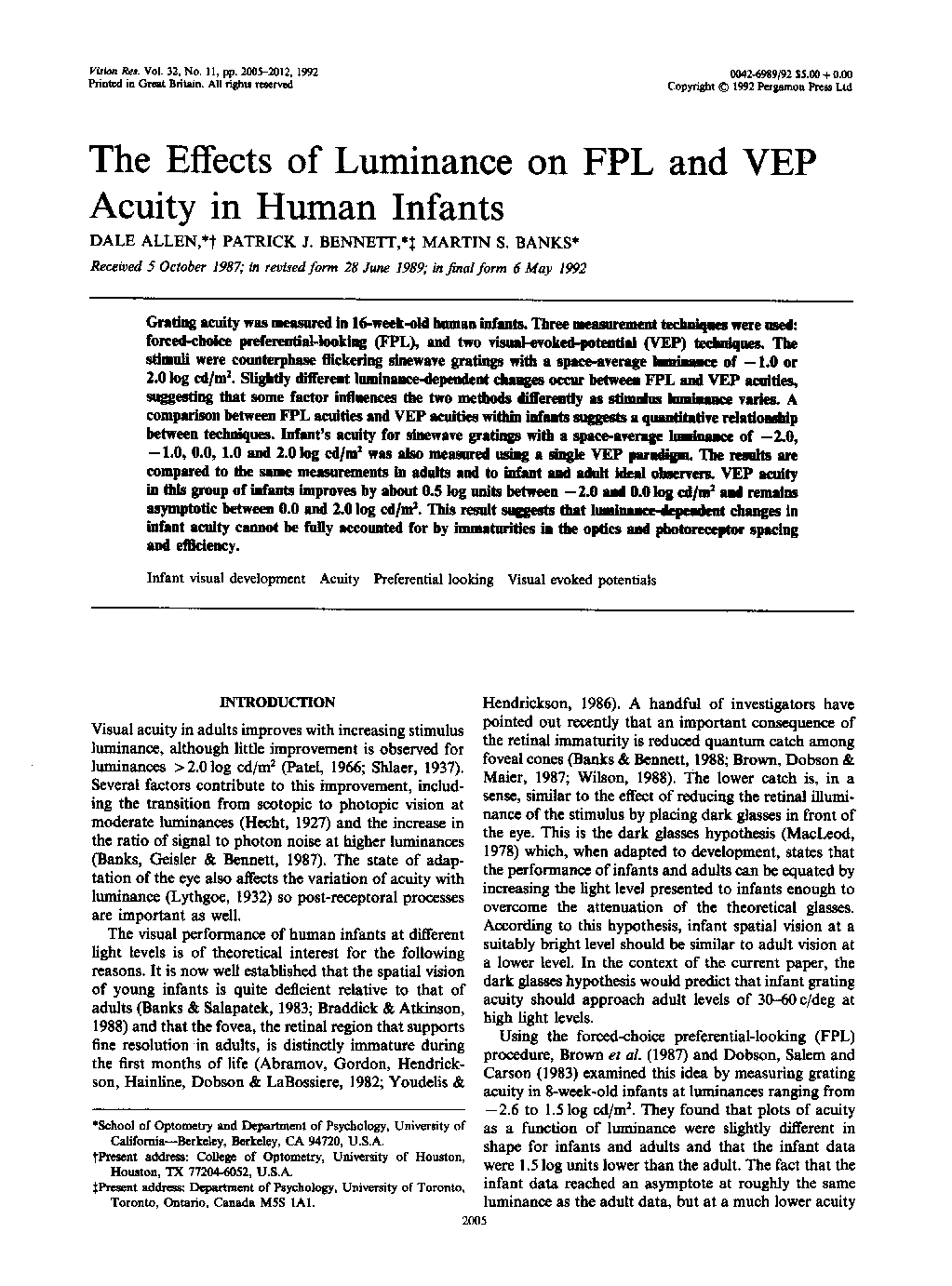| Article ID | Journal | Published Year | Pages | File Type |
|---|---|---|---|---|
| 4038660 | Vision Research | 2012 | 8 Pages |
Abstract
Grating acuity was measured in 16-week-old human infants. Three measurement techniques were used: forced-choice preferential-looking (FPL), and two visual-evoked-potential (VEP) techniques. The stimuli were counterphase flickering sinewave gratings with a space-average luminance of â1.0 or 2.0 log cd/m2. Slightly different luminance-dependent changes occur between FPL and VEP acuities, suggesting that some factor influences the two methods differently as stimulus luminance varies. A comparison between FPL acuities and VEP acuities within infants suggests a quantitative relationship between techniques. Infant's acuity for sinewave gratings with a space-average luminance of â2.0, â1.0, 0.0, 1.0 and 2.0 log cd/m2 was also measured using a single VEP paradigm. The results are compared to the same measurements in adults and to infant and adult ideal observers. VEP acuity in this group of infants improves by about 0.5 log units between â2.0 and 0.0 log cd/m2 and remains asymptotic between 0.0 and 2.0 log cd/m2. This result suggests that luminance-dependent changes in infant acuity cannot be fully accounted for by immaturities in the optics and photoreceptor spacing and efficiency.
Related Topics
Life Sciences
Neuroscience
Sensory Systems
Authors
Dale Allen, Patrick J. Bennett, Martin S. Banks,
